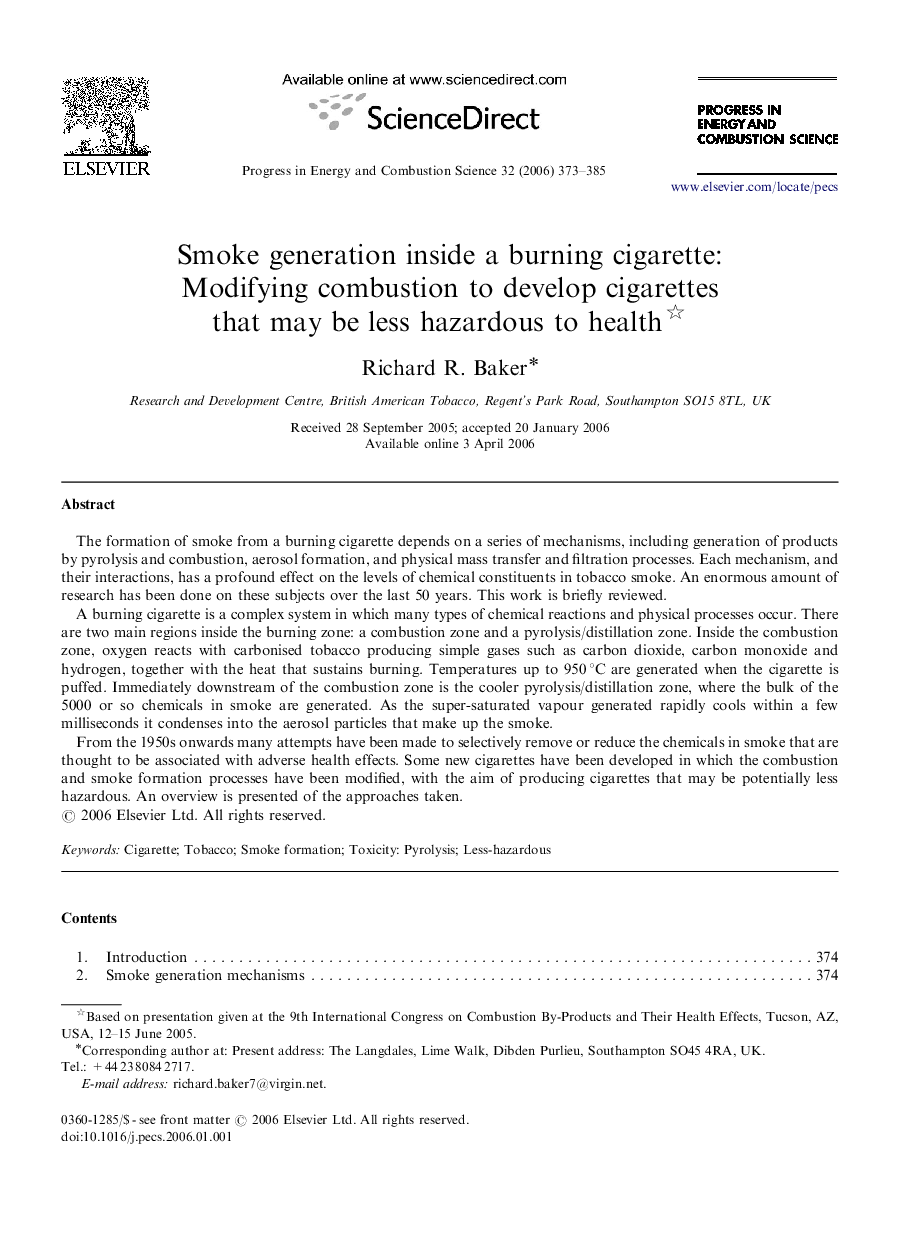| Article ID | Journal | Published Year | Pages | File Type |
|---|---|---|---|---|
| 241872 | Progress in Energy and Combustion Science | 2006 | 13 Pages |
The formation of smoke from a burning cigarette depends on a series of mechanisms, including generation of products by pyrolysis and combustion, aerosol formation, and physical mass transfer and filtration processes. Each mechanism, and their interactions, has a profound effect on the levels of chemical constituents in tobacco smoke. An enormous amount of research has been done on these subjects over the last 50 years. This work is briefly reviewed.A burning cigarette is a complex system in which many types of chemical reactions and physical processes occur. There are two main regions inside the burning zone: a combustion zone and a pyrolysis/distillation zone. Inside the combustion zone, oxygen reacts with carbonised tobacco producing simple gases such as carbon dioxide, carbon monoxide and hydrogen, together with the heat that sustains burning. Temperatures up to 950 °C are generated when the cigarette is puffed. Immediately downstream of the combustion zone is the cooler pyrolysis/distillation zone, where the bulk of the 5000 or so chemicals in smoke are generated. As the super-saturated vapour generated rapidly cools within a few milliseconds it condenses into the aerosol particles that make up the smoke.From the 1950s onwards many attempts have been made to selectively remove or reduce the chemicals in smoke that are thought to be associated with adverse health effects. Some new cigarettes have been developed in which the combustion and smoke formation processes have been modified, with the aim of producing cigarettes that may be potentially less hazardous. An overview is presented of the approaches taken.
